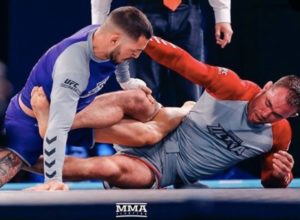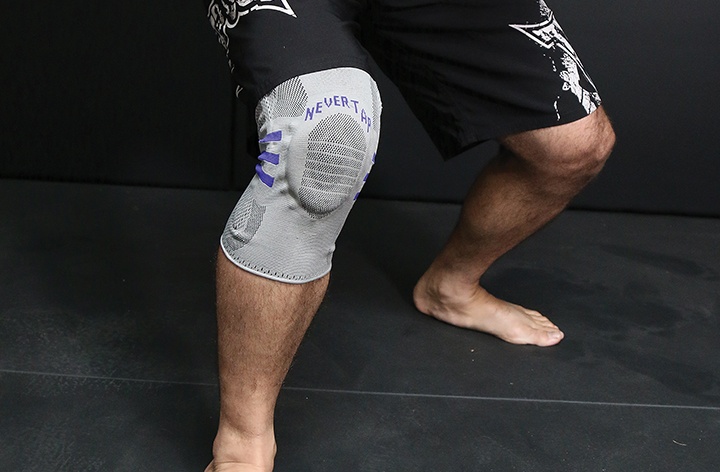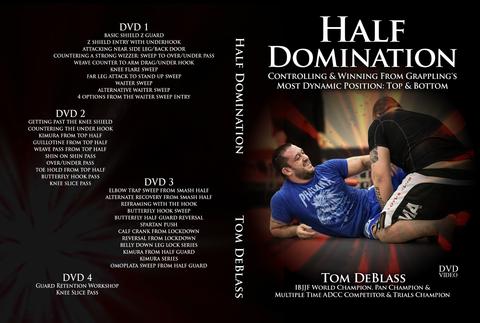Injuries will definitely take a toll on your body in any sport, but they can be debilitating in high-impact Jiu-Jitsu. For this reason, it’s important to differentiate what is considered high-risk training with an injury.
In the case of a bad knee injury or a torn ACL, the bad news for the jiujiteiro is that you are better off not training at all. It’s important to heal fully, and follow through with any required rehab steps, or even surgery, to let your body ease back into normality.
There are some BJJ practitioners out there who will actually train with a torn ACL, but invest thousands of dollars in a custom-made “robocop” brace. This is definitely not the sort of neoprene wrapper that you can easily purchase at a local pharmacy, but rather a rigid carbon fiber brace that clamps onto the thigh, with large hinges. It’s none too pleasant to roll with anyone who is wearing one — it constantly pushes up against your body, and might even puncture you.
The only honest way to potentially train with an injured knee and a brace, is to find partners who will be understanding of your injury, and willing to work with you. Again, it’s well to remember that any jiujiteiro is putting themselves at a very high risk of further injury by continuing to train, even with a protective brace.

Lighter injuries are more conducive to training. If the knee is simply just a little banged up, a BJJ practitioner is better off to train on the bottom. If you’re standing, for instance, you are an easy target for a reckless to partner sweep you, or perform some crazy de la Riva guard and crank your knee sideways. It’s safest to be on the bottom, and stick to playing butterfly and half guard, best showcased by legendary BJJ figure, “Gordo”.
Half Guard is your saviour
Roberto “Gordo” Correa, a former Brazilian student and instructor at Gracie Barra is considered one “of the most influential figures in Jiu-Jitsu history,” for his creation of the modern half guard. He is said to have come up with the move because of his own knee injury. Gordo found that he couldn’t put his opponent into a fully closed guard anymore, and wasn’t able to use most of the open guards, so he started to use just one leg, and came up with the half guard. To protect his knees, Gordo started playing from the bottom, and controlling both his opponent’s legs. He used his injury to his advantage, and managed to explore its benefit — an ingenuity that made him “one of the best instructors in Brazil”.
If you’re willing to take the chance by training with a knee brace, or try to work with Gordo’s “meia guarda”, or butterfly guard, beware of training with beginners, or large opponents. Bigger guys will move dynamically, and might quickly change direction. Beginners are just simply unpredictable, and one can never be sure when they might perform a spontaneous somersault to the face. A jiujiteiro with a knee injury should preferably train with a smaller, and experienced partner.
There are lots of in depth, first hand articles detailing how to train with a torn ACL, however the recovery period is at least six months — a process that requires a great deal of rehab. After injuring any part of the body, it’s simply not wise to just jump back into strenuous training. With any recovering injury, it’s recommended to start light drilling, and feeling out what you can and can’t do based on the pain and your level of flexibility. When drilling is possible, you might want to skip sparring, and just slowly focus on working your body back onto the mats. After your knee has taken a few hits again, and you’re feeling okay, then you’ll finally have confidence to jump back into regular training again.
To improve your half guard techniques, you will want to check out Tom DeBlass‘ 4 volume, best-selling Half Domination series today. This series has been so popular that we wouldn’t be suprised if a Half Domination Part Two gets made in the very near future!


















